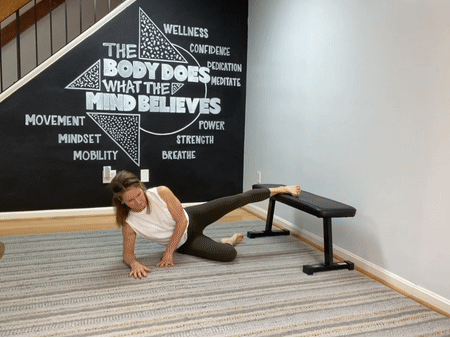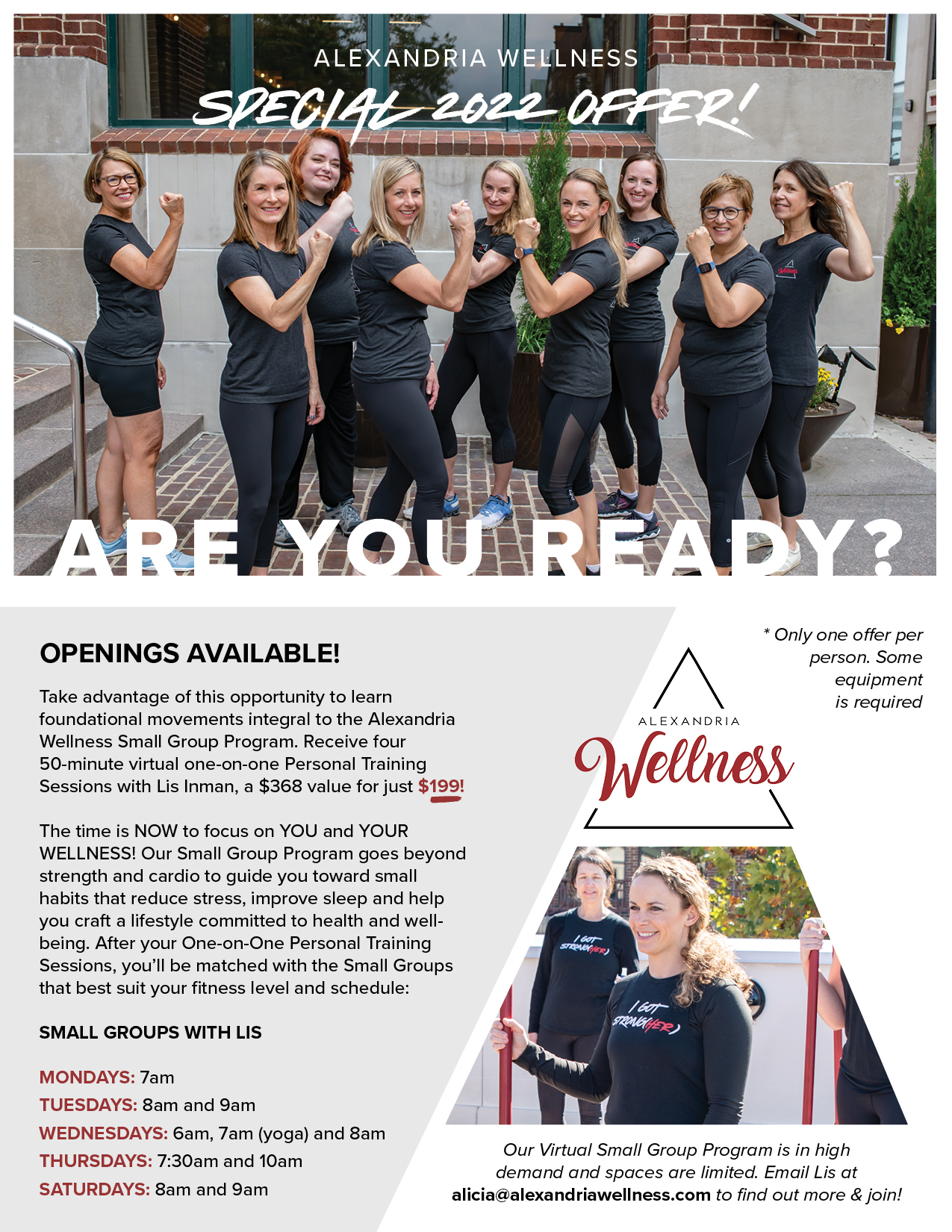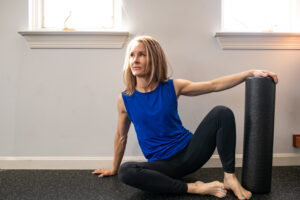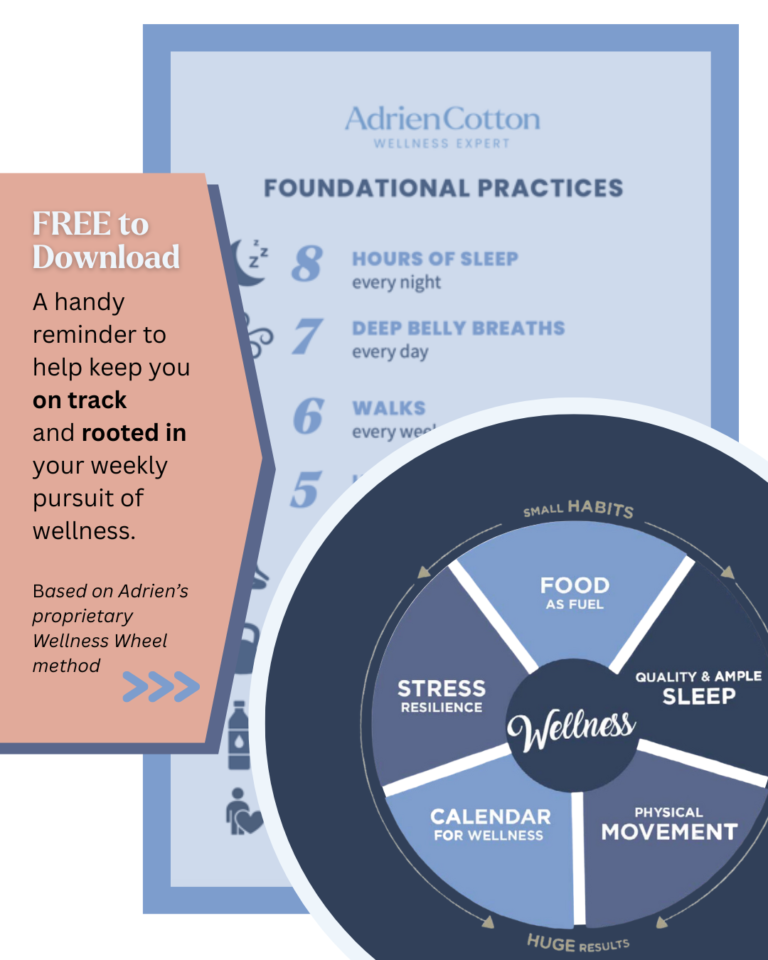I am all about efficiency in exercise. The more muscles we activate at one time, the more “bang for your buck” you get! It’s even better when it strengthens an area not typically engaged, like the adductor!
One AW Community member says this about the Copenhagen: “It targets muscles that I need to better stabilize my knees for my long bike rides” – T.N.
Another says, “I can really feel the difference in each glute. It was one of the reasons I decided to PT my right leg only to make it closer to my left side.” – J.R.
And another says, “It works my core like crazy. It makes me shake! Love that it never gets easy.” – H.L.
I learned the Copenhagen two years ago when I was injured from significant underuse of my left big toe. The entire left chain from the toe up to my core was weak and causing pretty painful – and worse yet, limiting – piriformis syndrome. This weakness was the result of overcompensating with my (stronger) right side and from the lack of use of my left big toe. When tested for strength in my left toe, it was silly how weak it was.
For me, injury is not only a physical detriment; it also hits me emotionally. Being able to move in every way I want – limitless, in fact – is my goal. I have to say I feel limitless today! This is in large part due to the Copenhagen plank! When my Physical Therapist prescribed it, I practiced it every day. I started with being able to complete it for literally five seconds on each side and have worked my way up to 45 seconds with a push-up (or 12!) between each side! My PT also prescribed other exercises for my toe. This one, I believe, was instrumental enough to share with you.
Originally, the Copenhagen was prescribed with a partner holding the leg opposite of the shoulder in the side plank position for soccer players on the field before games. Not all of us have a willing partner to help us, and therefore a weight bench is optimal – so you can place the other leg straight under the bench.
I’m obsessed with using the floor for our strength, as you’ve learned from my hands and feet blog. The floor is a powerful piece of equipment on which we can press, feel our hands and feet, and take full advantage of the neural connection between whatever is in contact with the floor, with our core, and our brain.
Our brain loves when our bodies are on the ground. It can better know its position in space and focus more deeply on other activities like engaging our core and the other muscles we aim to train.
One part of our bodies that doesn’t get activated much is the inside of our legs, also known as the adductors. We also tend to “pick up” our big toe – or simply don’t when we need it the most – like during a run, squat, or simply standing still. The big toe communicates up the inside of our leg and activates those often-neglected muscles.
The Copenhagen plank initiates the movement from the big toe, tracing activation along the inside of our foot, engaging everything on upward.
Heading to the other end of the movement, where our elbow is on the floor, we are connecting one side of the body to the other – through the core – and engaging everything between and more. Approach this with caution – start on your knee with a step parallel to the height of your hips in a side plank. As you improve, you will want to raise your load-bearing foot to about seat height.
Version #1: Start with this.

Start with five seconds. This is a very advanced movement, so approach it with caution and make sure you are placing your elbow directly under your shoulder. Start with a five-second hold progressing in five-second increments only when you’ve mastered this for a few weeks.
Version #2: If the first version is comfortable and easy for you, try progressing to this one.

Here are some tips to make sure you are getting the most out of this movement:
- Pull your shoulder down and away from your ear/neck and pull your armpit together.
- Make sure your hips are “pulled” as high to the sky as possible, and don’t “sink” down toward the floor.
- Press your knee or foot actively into the bench or block.
- Breathe!
We want to help you (and your team!) take charge of your health and wellness. Here are two ways you can get started today. If you are interested in any of our newest programs, like our latest special for our small group fitness program, email us at alicia@alexandriawellness.com.




